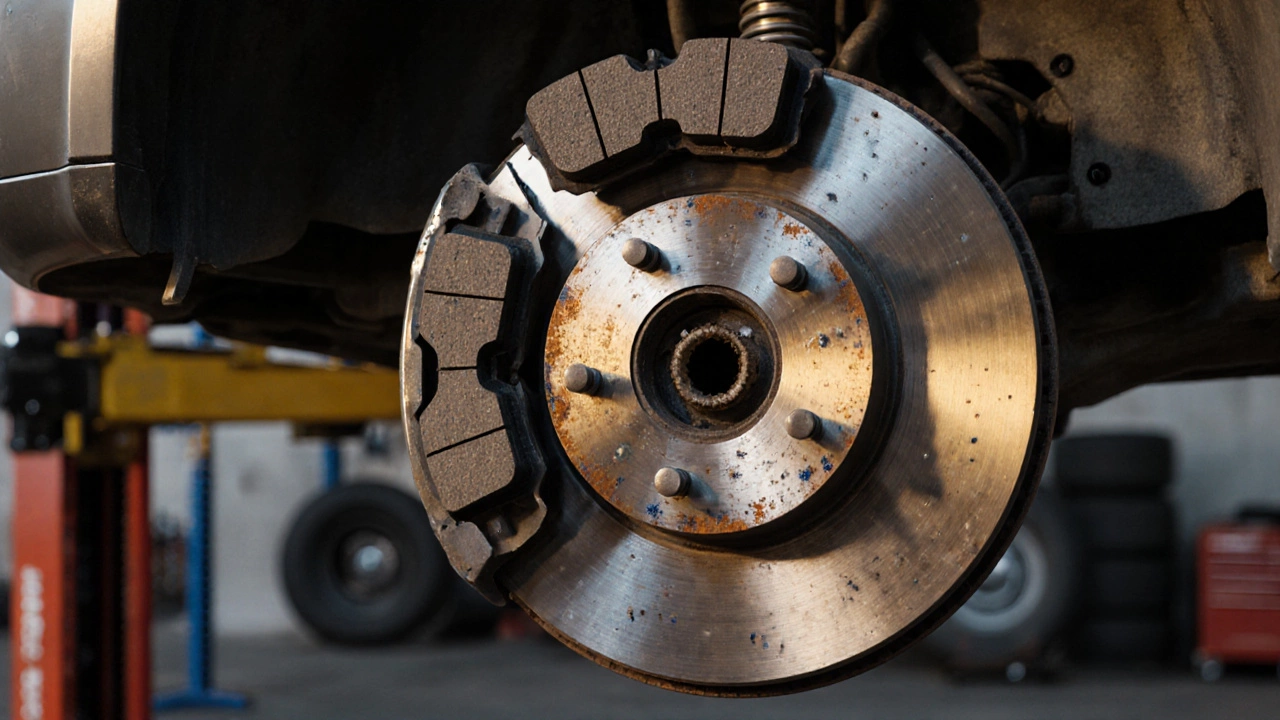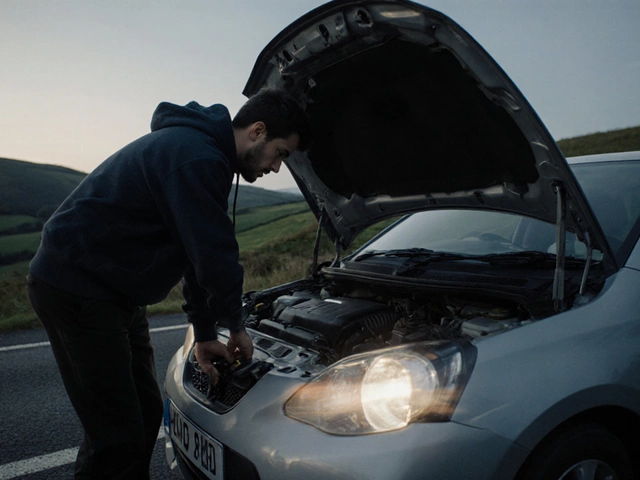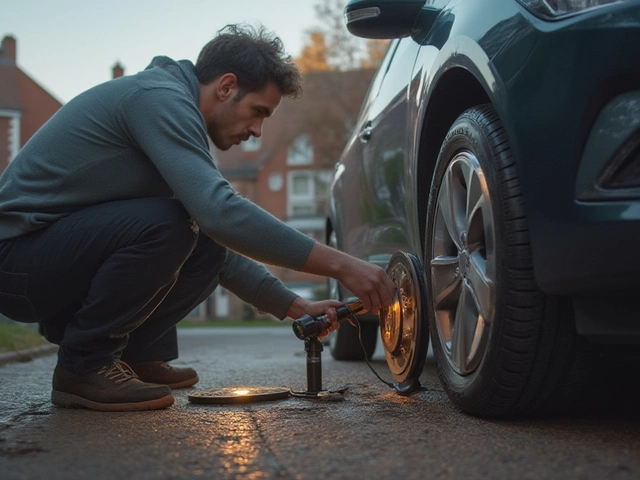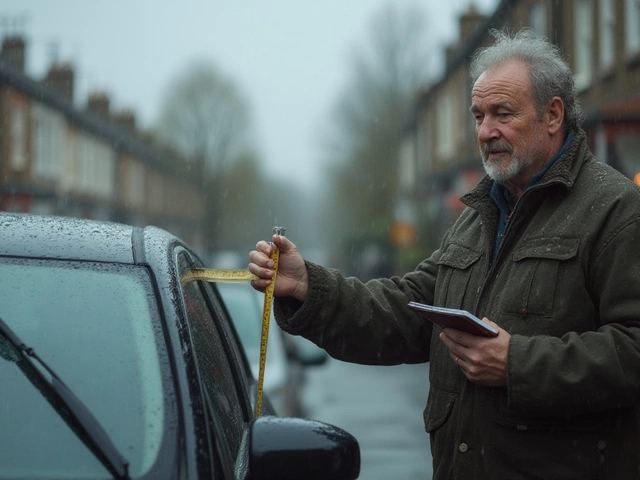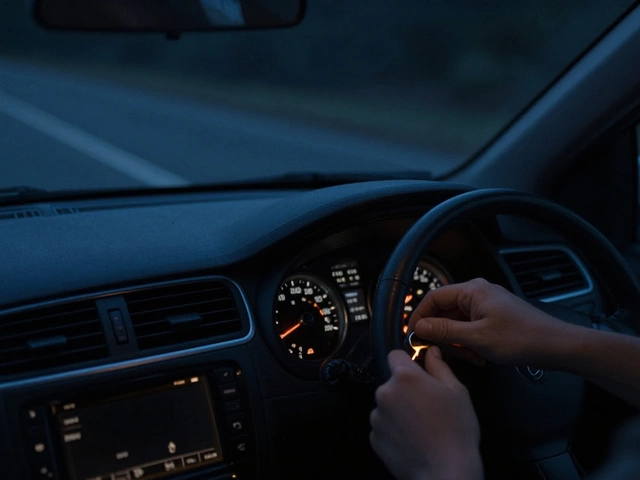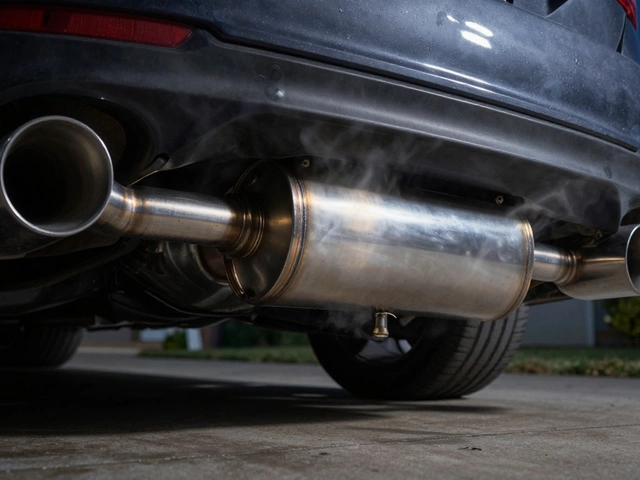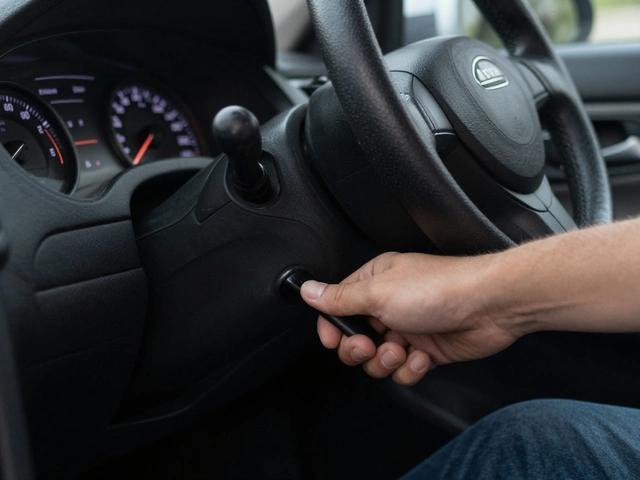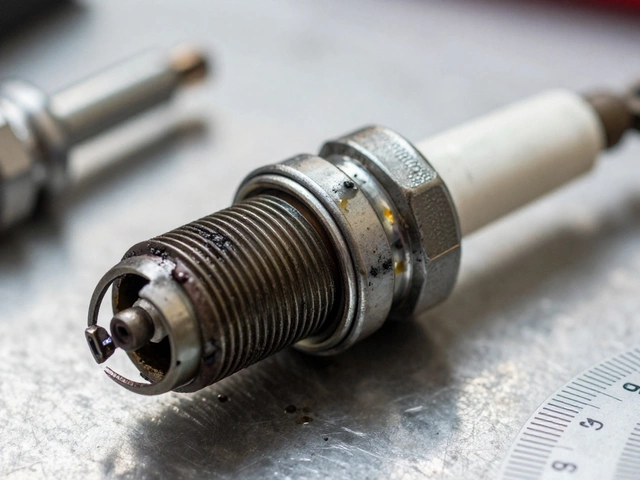Brake Rotor Cost Calculator
Calculate Your Brake Rotor Options
Enter your rotor measurements and vehicle details to see the cost comparison and safety considerations for resurfacing versus replacement.
Recommended Option:
Key Takeaways
- Resurfacing can save 30‑50% versus a brand‑new rotor if the steel is still thick enough.
- Modern OEM rotors often cost more than $150, while a resurfaced rotor usually stays under $70.
- Safety‑critical factors-warping, cracks, or severe rust-make replacement the only viable option.
- Labor rates vary; a quick resurfacing job is often under £50, but a full replacement can hit £150‑£200.
- Check your vehicle’s minimum thickness spec before deciding; you’ll find it in the service manual or on the rotor’s imprint.
What Are Brake Rotors?
When you step on the pedal, the Brake rotors are the round metal discs that sit behind each wheel. They work with the friction material on the brake pads to turn kinetic energy into heat, slowing the car down. In a typical disc‑brake system, the rotor spins with the wheel while the caliper squeezes the pads against it.
Rotors are usually made of cast iron or a composite alloy. Their thickness, surface finish, and material grade directly affect stopping distance and brake fade resistance.
What Is Rotor Resurfacing?
Resurfacing (also called machining or turning) removes a thin layer of metal from the rotor’s face to eliminate uneven wear, grooves, or minor warping. The process uses a precision lathe to shave off 0.2‑0.5 mm, restoring a flat, smooth surface.
The result is a rotor that’s almost as good as new-provided the core thickness remains above the manufacturer’s minimum. Resurfacing is popular in fleet shops because it extends part life without the expense of a full replacement.
When to Resurface vs. Replace
Deciding between resurfacing and replacement isn’t just about price. Consider these three factors:
- Thickness remaining: Most manufacturers stamp a minimum thickness on the rotor (e.g., 22 mm). Measure with a micrometer; if the post‑machining thickness stays above that mark, resurfacing is safe.
- Condition of the metal: Cracks, deep scoring, or excessive rust can’t be fixed by machining. Any sign of a crack means you must replace.
- Vehicle application: Heavy‑duty trucks, performance cars, or vehicles with ABS often benefit from newer‑generation rotors that incorporate slots or cross‑drilling. In those cases, replacement may improve cooling and brake feel.
In practice, many mechanics perform a quick visual and thickness check, then quote both options. That’s why understanding the brake rotor cost differences helps you negotiate a fair price.
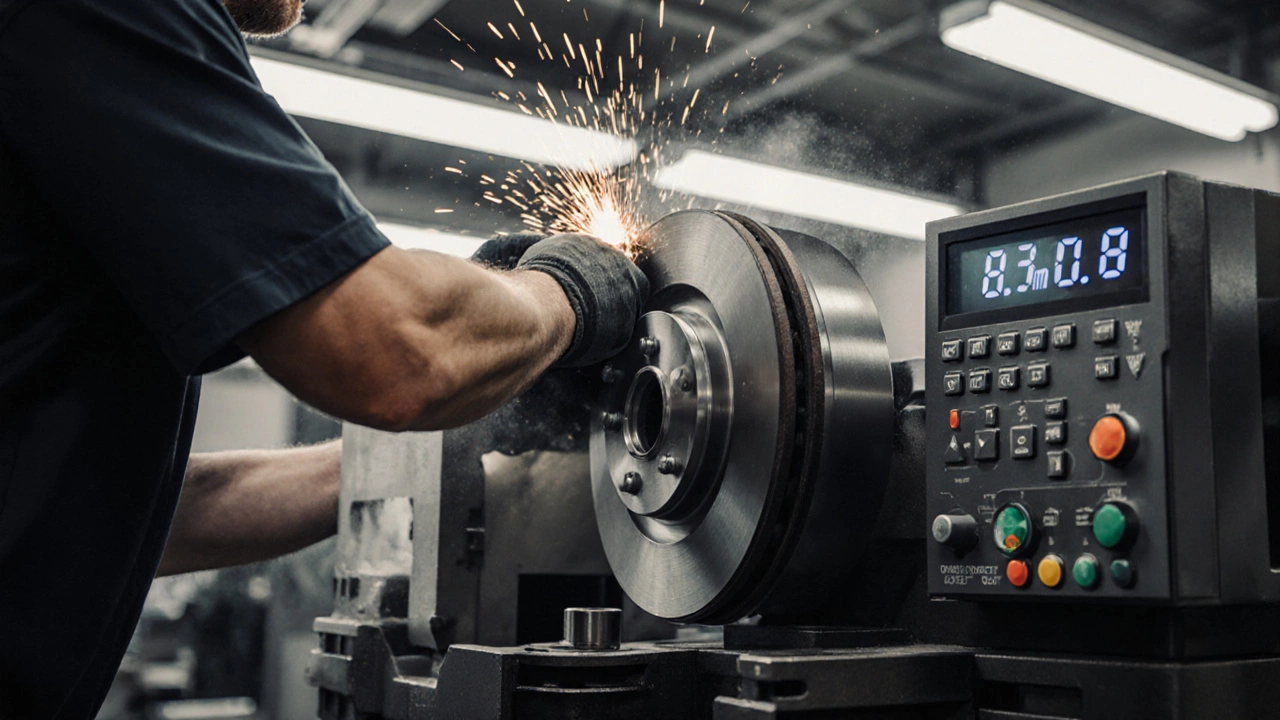
Cost Breakdown: Resurfacing vs. Replacement
| Service | Parts | Labor | Total (incl. VAT) |
|---|---|---|---|
| Resurfacing (cast‑iron) | £20‑£35 (machining fee) | £30‑£45 | £50‑£80 |
| OEM rotor replacement | £120‑£180 | £40‑£60 | £160‑£240 |
| Aftermarket rotor | £70‑£110 | £40‑£60 | £110‑£170 |
Labor rates differ by region; big cities like Manchester tend to charge on the higher end of the range. Keep an eye on any “diesel‑fuel‑plus” add‑on fees-some garages include a “rotor cleaning” charge that can inflate the bill.
Pros and Cons at a Glance
| Aspect | Resurfacing | Replacement |
|---|---|---|
| Cost | Typically 30‑50% cheaper | Higher upfront cost |
| Time | 30‑45 min per axle | 1‑2 hrs per axle |
| Longevity | Adds 10‑15 k miles if thickness permits | Fresh rotor - full lifespan |
| Safety | Good if no cracks, thickness OK | Best - eliminates hidden defects |
| Performance | Similar to original | Can upgrade to slotted/cross‑drilled designs |
Real‑World Example: The Monday Morning commuter
Emma drives a 2018 Ford Focus on a daily 30‑mile commute. After 80 000 miles, her brake pads were replaced, and the shop suggested either resurfacing the rotors or swapping them for a new set of aftermarket units.
Measurements showed 22.3 mm remaining thickness on a spec of 22 mm. That left only 0.3 mm margin for machining, so the shop warned that resurfacing would push the rotors below safe limits. Emma chose to replace with a reputable aftermarket brand costing £130 for both front rotors. The total invoice was £190, including labor.
Six months later, the brakes still feel firm, and Emma’s fuel economy hasn’t changed-a clear sign that the extra investment paid off.
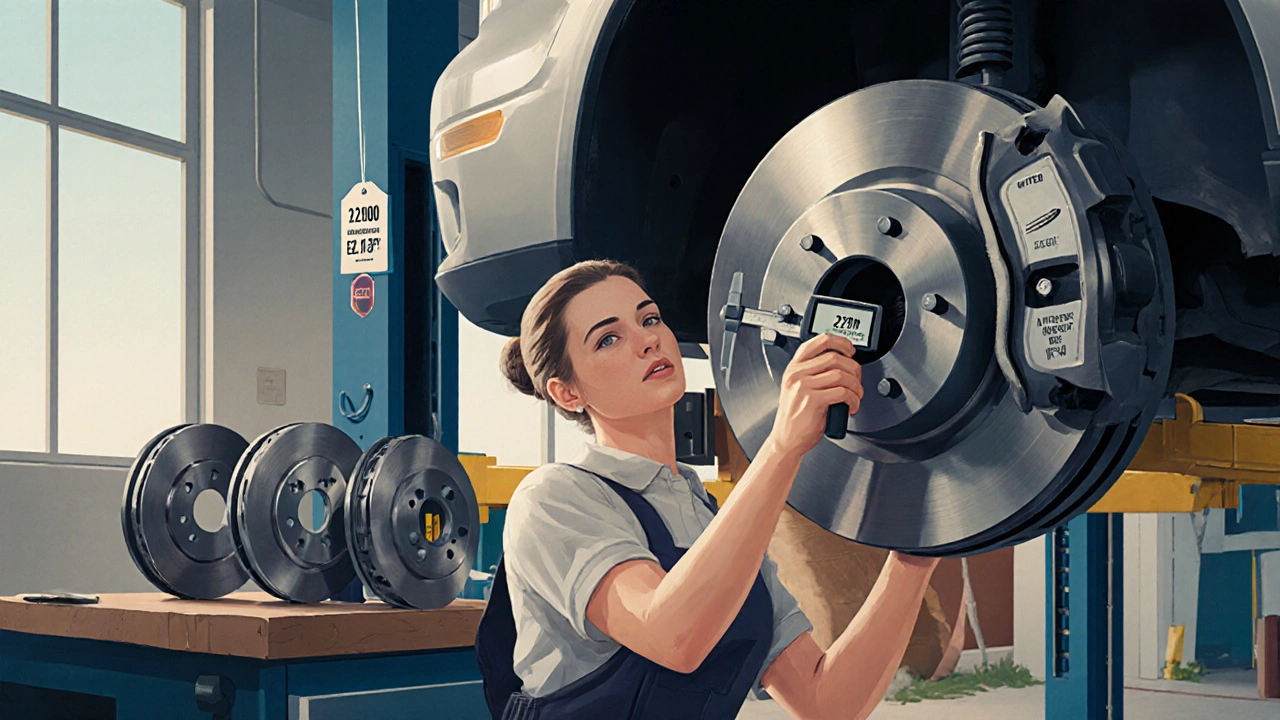
How to Inspect Your Rotors Yourself
- Visual scan: Look for blue‑orange rust, deep scoring, or any crack that runs from edge to edge.
- Thickness check: Use a micrometer or a dedicated rotor gauge. Write down the measurement and compare it to the stamped minimum.
- Run‑out test: Spin the wheel (on a lift or jack) and watch for wobble. Any wobble >0.2 mm usually means warping.
- Pad‑to‑rotor contact: If the pads leave uneven marks, the rotor surface is probably out of round.
If any of these checks raise a red flag, plan for a replacement. If the rotor passes, ask the mechanic for a resurfacing quote.
DIY or Professional?
Resurfacing requires a specialised lathe, a calibrated dial‑indicator, and a clean environment to avoid contaminating the brake surface. Most DIYers lack the equipment, and an incorrectly machined rotor can cause brake judder or reduced heat dissipation.
Replacing a rotor is more approachable with basic hand tools: a jack, lug wrench, torque wrench, and a set of new bolts. However, you must also bleed the brake system if you disturb the caliper, which adds a level of complexity.
Bottom line: If you’re comfortable with precision machining, go DIY on the resurfacing. Otherwise, let a reputable garage handle either job, and ask for a detailed invoice that separates parts from labour.
Frequently Asked Questions
Can I resurface rotors more than once?
You can resurface a rotor only if the post‑machining thickness stays above the manufacturer’s minimum. After two or three passes, the metal may become too thin, increasing the risk of warping.
Do slotted or cross‑drilled rotors cost more to resurface?
Yes. The slots or holes must be re‑cut after machining, which adds extra labour and tooling costs. Many shops charge an additional £15‑£25 for this service.
Is it safe to mix OEM and aftermarket rotors on the same axle?
Mixing brands can work if both meet the same specification (diameter, bolt pattern, thickness). However, to maintain balanced braking, most experts recommend using the same type on both sides.
How does vehicle weight affect the decision?
Heavier vehicles (SUVs, vans) generate more brake heat, so a fresh rotor with better heat‑dissipation features often pays off in the long run. Lighter cars can get away with resurfacing more often.
Do I need to replace brake pads when I replace rotors?
It’s advisable. New rotors have a fresh surface, and fresh pads will mate properly, delivering optimal friction and reducing early wear.
Bottom Line
If your rotors are still above the minimum thickness, have no cracks, and you’re looking to keep expenses down, resurfacing is the clear money‑saver. For high‑performance cars, heavy‑duty use, or any rotor showing structural damage, replace it outright. Knowing the exact brake rotor cost breakdown and checking the metal condition will help you avoid costly surprises on the road.
